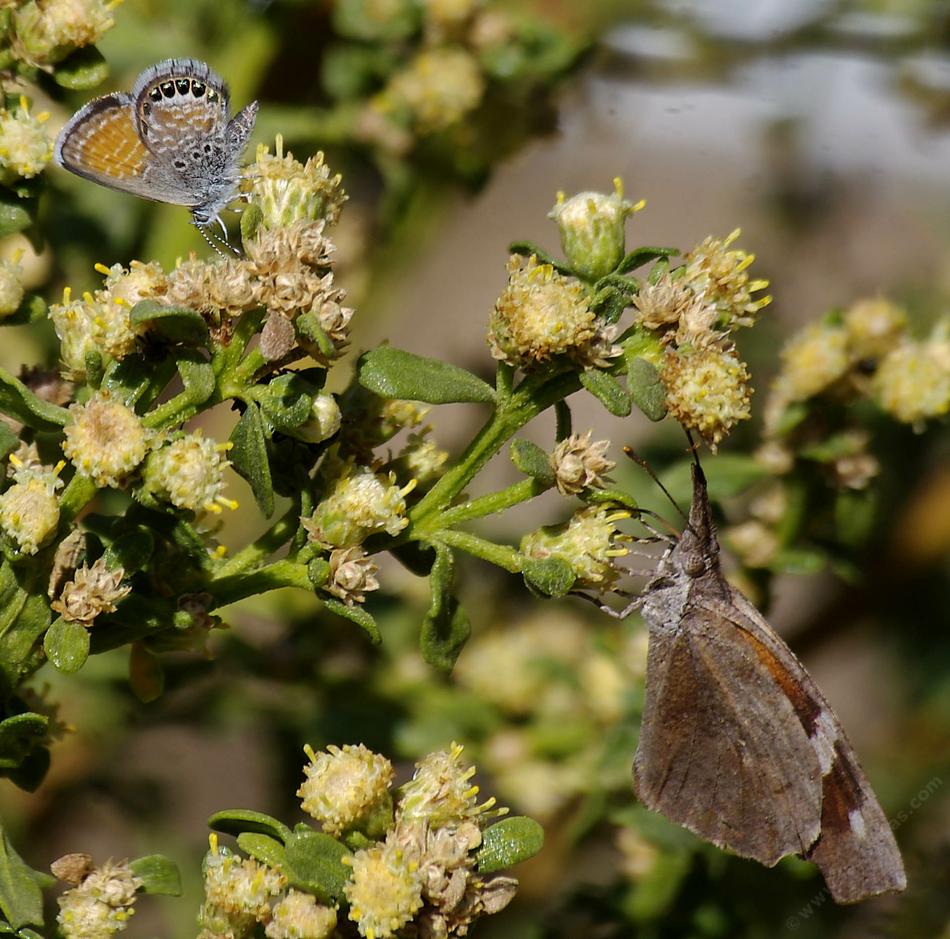Baccharis pilularis var. consanguinea
Coyote Brush and Bush Baccharis.
Baccharis pilularis consanguinea, Coyote Brush, is usually deer proof throughout California. (You might want to cover it for the first year.) It's drought tolerant, very useful for hedges or fence lines, much underused. Water 1/week until est. then 1/month or so during the first summer. Very fast! It can mature in one-two year.
I love using Coyote Brush as a native hedge next to a rural road. It looks like it belongs there, no one has to know that you planted it, but you can has some privacy on the other side. After a few years the Jays will start planting acorns under the bushes(you can help plant more) and you'll end up with a hedge of oak trees between you and the road. If you want a hedge that looks even more natural, add a few Toyons, Coffeeberrys, Manzanitas and Ceanothus into the mix. By themselves or with others, plant on 6-8 ft. centers for hedge or stagger plant two rows at about 8 ft. centers.
Another mini-wildlife plant! A pioneer plant in communities such as coastal sage scrub and chaparral. When the native vegetation is removed from an area by bulldozer, or tilling, or grazing and trampling animals, one of the first natives that returns to the site, is Mr. Or Mrs. Coyote Brush, Baccharis pilularis . The problem for we horticulturists/biologists is that only male plants are utilized in the landscaping trade for Baccharis pilularis subsp. pilularis. If Baccharis pilularis subsp. pilularis, any named horticultural variety, are substituted for B. pilularis subsp. consanguinea in ecological restoration, there will not be as much seed set and recruitment of new individuals. They're great start ups for bad sites.
A 3-6' perennial with green-brown stems and green leaves. Baccharis species are the nectary sources for most of the predatory wasps, native skippers(small butterflies) and native flies. You will see the weirdest bugs on these plants. From green beetles to 1 inch long flies with short wings and no middle to their body, these plants 'sing'.
I highly recommend these plants next to a backyard sitting area(they do not look good enough in the foreground) to attract wildlife'. Moreover, Bambi doesn't eat them!!
Baccharis pilularis var. consanguinea tolerates seaside conditions, alkaline soil, sand, clay and seasonal flooding.
Foliage of Baccharis pilularis var. consanguinea has color green and is evergreen.
Flower of Baccharis pilularis var. consanguinea has color white.
Communities for Baccharis pilularis var. consanguinea:Chaparral, Closed-cone Pine Forest, Coastal Sage Scrub, Mixed-evergreen Forest, Northern Coastal Sage Scrub, Coastal Prairie and Southern Oak Woodland.
| ph: | 5.00 to 8.00 |
|---|---|
| usda: | 7 to 10 |
| height[m]: | 1.00 to 3.00 |
| width[m]: | 1.00 to 4.00 |
| rainfall[cm]: | 30.00 to 160.00 |





 play movie
play movie


